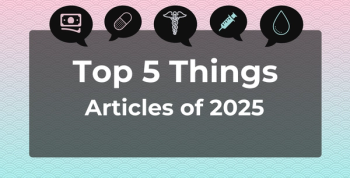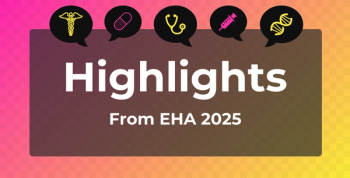
AllergyAware E-Learning Training Program Boosts Anaphylaxis Preparedness in School Staff
Key Takeaways
- AllergyAware e-learning course significantly improved school personnel's anaphylaxis knowledge and confidence in using epinephrine auto-injectors.
- Food allergies increase anaphylaxis risk, impacting children's quality of life and necessitating effective management strategies.
The AllergyAware e-learning course effectively trained school personnel on anaphylaxis management, significantly improving their knowledge and confidence in using epinephrine auto-injectors, despite some technical and pacing issues reported by users.
The
The CDC created the “Voluntary Guidelines for Managing Food Allergies in Schools and Early Care and Education Programs” as the first national guidelines for school food allergy management.2 These guidelines aim to protect the physical and emotional health of students with food allergies by offering information and strategies that help schools reinforce federal laws and regulations. Similarly, Ontario, Canada, passed Sabrina’s Law, legislation that established legally required steps to keep children at risk of anaphylaxis safe at school.3
Lawmakers have introduced various forms of legislation to involve school personnel in recognizing anaphylaxis symptoms and responding to emergencies.1 Many situations require using stock epinephrine auto-injectors (EAIs) for a quick response to a child's allergic reaction. Certain school boards with established anaphylaxis prevention and management strategies have demonstrated the benefits of including proper training for school personnel when administering epinephrine, but additional training is needed to increase overall awareness among school staff and parents/guardians.
AllergyAware, an online, asynchronous anaphylaxis training program, offers versions of its course in English and French, specifically for school personnel. Researchers used an evidence-based instructional design to develop, implement, and evaluate the AllergyAware e-learning course as a training resource for anaphylaxis education. The course incorporates best practices, using a combination of text, images, and videos to deliver educational content.
For the pilot test, researchers enrolled 105 volunteers, including 74 individuals, which included elementary and secondary school teachers, administrators, educational assistants, librarians, and custodial staff. Participants showed improved anaphylaxis knowledge, with pretest scores averaging a mean (SD) 51.1% (15.8%) and posttest scores rising to 78.2% (16.2%).
Technical challenges arose with three drag-and-drop sequencing questions on the pretest. These questions, which required users to scroll through multiple steps for autoinjector use, led to low pretest scores, with only 3%, 15%, and 18% correct responses. Despite these difficulties, posttest scores significantly improved to 49%, 70%, and 80% for the same questions. It's important to note that these technical issues may have impacted the reliability of the assessment.
Participants also improved their confidence in using an EAI, as measured by a 3 point Likert scale and their use of Twinject EAIs, both featured in the course's initial version. Participants who reported very high confidence in using the EpiPen and Twinject doubled and tripled, respectively, from the pretest to the posttest.
The study identified several key areas for improvement. Over half of participants (55%) disagreed that they could complete the program in a reasonable amount of time, with many noting in open feedback that the course took too long and the narration was too slow. Additionally, many participants felt frustrated with the "drag-and-drop" assessment items' technical aspects when sequencing auto-injector steps. Lastly, stakeholders noted that most compliance training courses exclude pretests to reduce overall duration.
Over the past 7 years, more than a quarter of users completed the course multiple times, and close to three-quarters (72.3%) completed the course a single time. Most participants who completed the English course were from Ontario (65.3%), followed by Alberta (16.7%) and British Columbia (12.5%). Participants from New Brunswick (41%), Québec (38%), and Ontario (15%) completed the French course. On average, sessions for participants without technical issues lasted 23 minutes and 38 seconds, which aligns with server estimates.
After participants completed the AllergyAware course, they filled out a brief survey focused on their self-reported confidence with EAIs and emergency anaphylaxis management, their opinions on the course's applicability and usefulness, and if they would recommend it to others. Over 95% of the 170,954 participants responded with "agree" or "strongly agree" to each self-confidence item. The comments were mostly positive, with a few respondents who felt that in-person training would deliver the course content more effectively than the online format.
Participants also completed a 10 item knowledge quiz, achieving a mean score of 9.05 (0.18), with a modal score of 10. The pass rate per quiz attempt was 95.73% (1.16). Participants consistently answered scenario-based questions about recognizing anaphylaxis or administering epinephrine correctly.
AllergyAware and other online education models limit the study's results because they cannot train or assess EAI administration proficiency in person. Additionally, researchers could better assess longer-term knowledge transfer by employing a pretest, an immediate posttest, and a delayed posttest, rather than only using an immediate postcourse quiz. Another key limitation is that researchers do not directly assess anaphylaxis management in real-world settings; instead, outcomes rely on self-reported proficiency rather than observed practice.
“Future research is needed to assess participants’ application of knowledge in real-world settings, including epinephrine autoinjector administration technique, long-term retention of key concepts, and impact on schools’ management of anaphylaxis,” study authors concluded.
References
- Sharma B, Ayers S, Huang J, Gerdts J, Waserman S, Levinson AJ. Online food allergy and anaphylaxis education for school personnel is effective and scalable: experience with the AllergyAware e-learning portal from 2015 to 2022. Allergy Asthma Clin Immunol. 2025;21(30):1-10. doi:10.1186/s13223-025-00977-0
- CDC National School Food Allergy Guidelines. Food Allergy Research & Education. October 30, 2013. Accessed July 22, 2025.
https://www.foodallergy.org/resources/cdc-national-school-food-allergy-guidelines - National school policies. Food Allergy Canada. Accessed July 22, 2025.
https://foodallergycanada.ca/professional-resources/educators/school-k-to-12/national-school-policies/
Newsletter
Stay ahead of policy, cost, and value—subscribe to AJMC for expert insights at the intersection of clinical care and health economics.







































